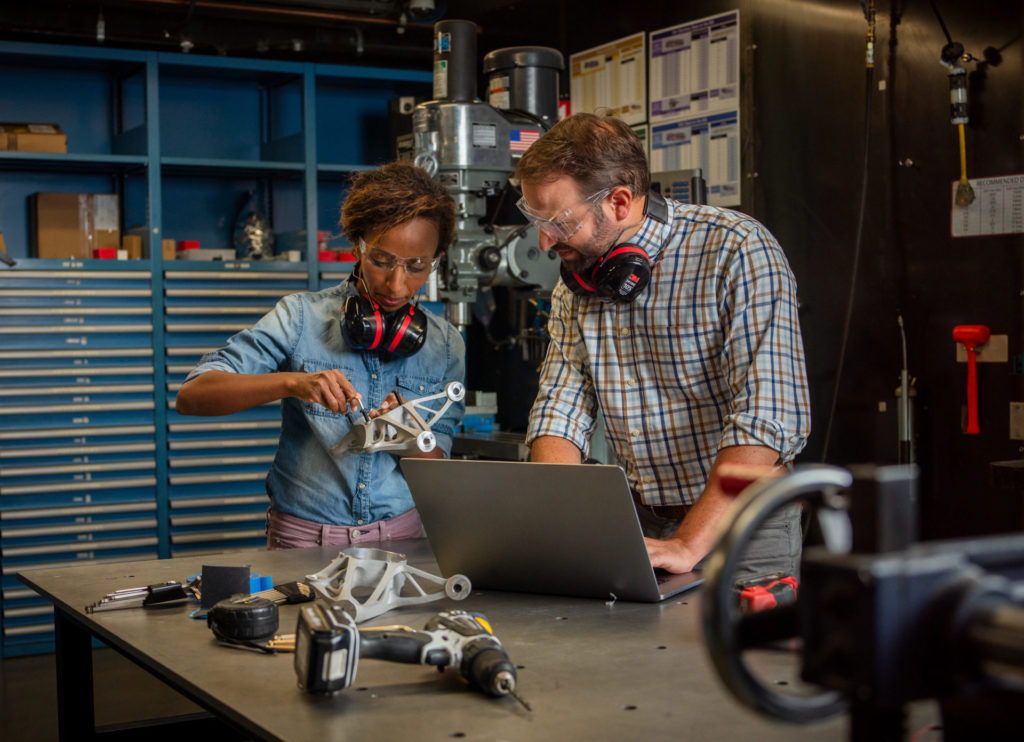& Construction

Integrated BIM tools, including Revit, AutoCAD, and Civil 3D
& Manufacturing

Professional CAD/CAM tools built on Inventor and AutoCAD
3 min read
A look at what algorithmic design tools like generative design mean for the future of design and engineering and why you should begin experimenting with these tools now.

Every day, we are inundated with information on what was, what is, and what might be—so much so that in a rush to assimilate what is happening around us, we forget to see where our journey is taking us. In the design and engineering industries, there is a new technology, algorithmic design, which has captured the imagination of the industry press and the public. However, I believe most underestimate the effect such tools will have on the products of the future. Generative design tools, as they are often called, will not only revolutionize product performance and manufacturing. They will also force companies to develop new ways of expressing their corporate identity—and most are not ready.
Creatives who follow industry trends have undoubtedly noticed the hype surrounding “generative design” software. Despite this, many industries struggle to adapt their workflows to incorporate the possibilities such tools can provide. Companies resist accepting new methods and changed manufacturing constraints, even if their product would be more attractive by incorporating new ideas.
What if I told you that the disruptive changes brought on by generative design tools are only the beginning? What if I told you that learning them will be imperative for your brand in the decades to come? Would you believe me?

The algorithmic design tools available today are impressive, but they’re almost laughably narrow. Typically they optimize only material usage (keeping it to a minimum) while maximizing the strength of single parts made with mundane materials. More advanced tools like generative design in Fusion 360 go beyond this scope by optimizing cost and recognizing the necessity to create geometry suitable for manufacture through additive or subtractive techniques.
As impressive as this is, it’s only the tip of the iceberg. Consider that a typical engineer must optimize all of these things in addition to many other elements….as examples: drag, environmental impact, manufacturing time, material availability, etc. The list is endless. Once companies like Autodesk succeed in mastering algorithmic control of each of these areas of optimization independently, the massive computing power available today will have no issues optimizing for all of them simultaneously in a way that humans cannot. Your algorithm will BE your design. In the future, understanding and being able to manipulate such design algorithms will be a central skill for any employable engineer or designer.
Additionally, as both the performance and manufacturing of products are optimized, differentiation must occur not in function or price but in the brand itself. If everything is optimized to perfection, products for similar uses will be, in theory, also similar—if not the same! Then—as now—it will be your brand that will distinguish your products in the market. Nike shoes are not Nike without the swoosh, BMW cars are not BMW without the double kidney grille, and a Coke beverage is not a Coke product without the “Coke bottle” shape. Design algorithms will include branding in their design criteria to ensure product recognition in the market.
In the future, companies will compete using these computer-controlled algorithms to make optimal products at the best prices available—they may even make entirely customized products for individual consumers! However, every brand will still need to be instantly recognizable to have a presence in the market and command a price extrinsic of the material value of the product. In short, if you want to make money, you have to have a brand, and in the future, brands won’t be logos—they will be lines of code.
Algorithmic control of branding will ensure that no matter what product you design, how you make it, or where it is made, it will be seen as one of your own and infused with the vibe that your company strives so hard to present. This is why it’s important that your company begins experimenting with the algorithmic design tools that are currently available to become proficient with algorithm-led design. The move towards full algorithmic control is gradual and we may not even recognize it until after it happens, but it is coming. It is a new skill, and only those that have it will survive in the mass market of the future.
Prepare your team for the future of design—learn more about the Fusion 360 generative design extension then get started with Fusion 360 today.

By clicking subscribe, I agree to receive the Fusion newsletter and acknowledge the Autodesk Privacy Statement.
Success!
May we collect and use your data?
Learn more about the Third Party Services we use and our Privacy Statement.May we collect and use your data to tailor your experience?
Explore the benefits of a customized experience by managing your privacy settings for this site or visit our Privacy Statement to learn more about your options.